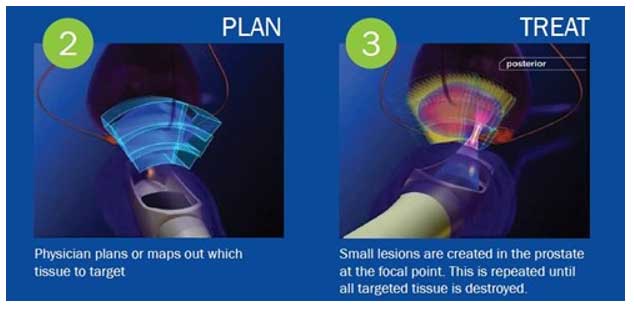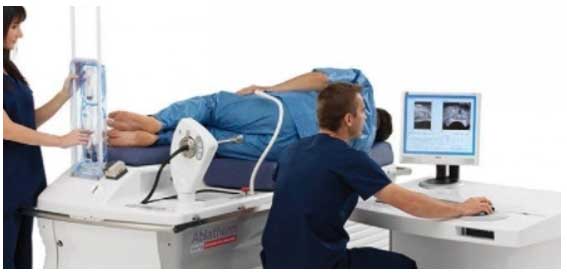HIFU treatment in prostate cancer
HIFU treatment is a method that treats prostate cancer in patients with prostate cancer by applying a high ultrasound wave to the prostate. Today, it is preferred in primary, salvage and focal treatments of prostate cancers. It was successfully applied for the first time in 1995.

HIFU is used as a treatment tool in which only the cancerous tissue is removed by making a sudden increase in temperature of high-power ultrasound waves in the targeted prostate cancer tissue with the help of a probe. At the same time, it breaks down cancer cells by mechanical action with the collapse mechanism of gas bubbles.

Before the treatment, the area to be treated should be determined by MRI and the biopsy from this area should be prostate cancer. The treatment is performed under general or regional anesthesia and in the side fetal position. MR images are loaded into the HIFU device, and prostate cancer is locally destroyed with a probe inserted through the rectum without making any incisions. The patient goes home the same day.

HIFU therapy is safely administered to patients with localized prostate cancer. It can be applied in low-risk prostate cancer as well as in patients who are not suitable for surgery. HIFU treatment can be safely applied in the case of cancer recurrence in the group receiving radiotherapy for prostate cancer treatment.
The HIFU procedure is a one-session application. The fact that it is an outpatient procedure is one of the factors where it is advantageous over other treatments. The possibility of intervening only in the cancerous tissue without damaging the surrounding tissues reduces the risk of complications. It can be an alternative to radiotherapy (radiation therapy) for patients who are not suitable for surgical treatment.
It is a type of treatment that is generally used in low-risk prostate cancer. It is a type of treatment that may come to the forefront in patients who do not want to have postoperative urinary incontinence and erection problems, in patients who cannot allocate the necessary time for surgery requiring hospitalization or radiotherapy (radiation therapy) consisting of repetitive sessions (at least 30), patients who are not suitable for surgery, and patients who have had recurrent abdominal surgeries. .

~
The purpose of this procedure is only to destroy prostate cancer. It does not cause any harm to the patient's urinary retention muscles and nerves. The most important advantage of this procedure is that it has very few side effects in urinary retention and sexual intercourse.
Patients with prostate cancer may experience minimal side effects compared to other treatments. These side effects may include bleeding in the urine, burning in the urine, inability to urinate, some parts of the urine, difficulty in maintaining the erection, leakage of semen into the bladder during ejaculation, and very rarely, involvement between the urinary tract and the intestines.
Patients are followed up with TPSA every 3 months. The lowest TPSA level is reached after a few months. In case of increased TPSA level, repeat MRI and biopsy may be required.
HIFU is a treatment method applied only in prostate cancer.
HIFU can be applied to men of all ages with prostate cancer, depending on the patient's suitability for treatment.